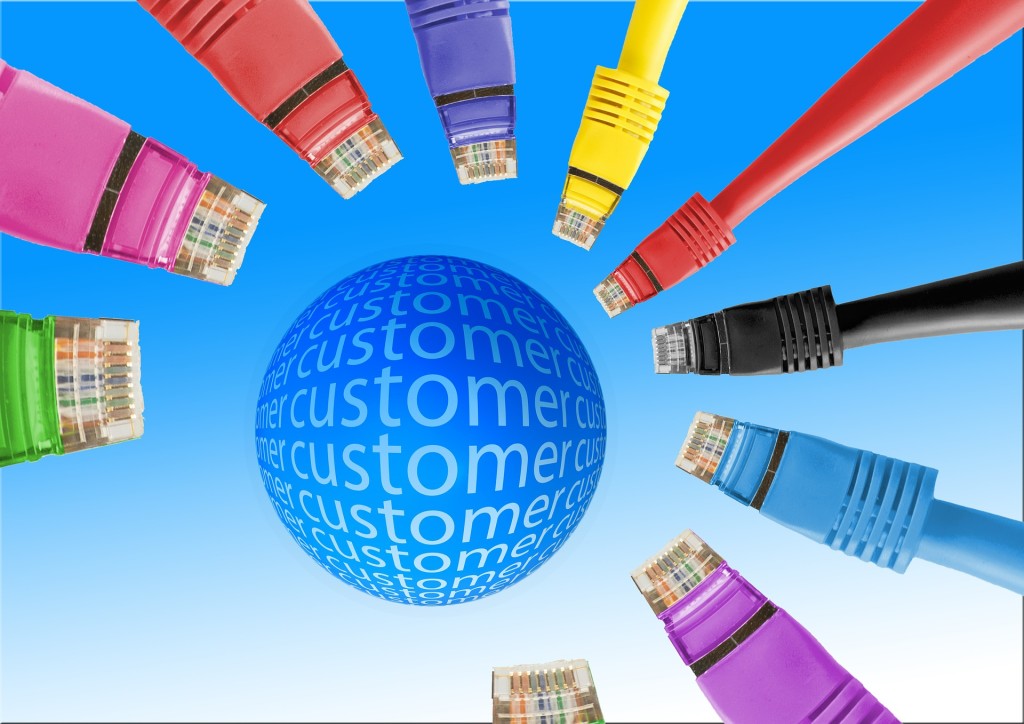
Earlier in this course, we cited the American Marketing Association’s definition of customer relationship management: “a discipline in marketing combining database and computer technology with customer service and marketing communications.” The AMA’s definition goes on to describe the ultimate goal of customer relationship management as the ability to provide “meaningful one-on-one communications with the customer by applying customer data (demographic, industry, buying history, etc.) to every communications vehicle.”Because customer relationship management (CRM) relies on customer data—and specifically the effective use of internal data—it’s important to discuss CRM systems in the context of marketing information and research.
CRM systems are powerful software systems that serve several essential functions for marketing, sales, and account management. Organizations use them to:
- Capture internal data about customers and customer interactions and house these data in a central location
- Provide business users with access to customer data in order to inform a variety of customer touch points and interactions
- Conduct data analysis and generate insights about how to better meet the needs of target segments and individual customers
- Deliver a marketing mix tailored to the needs and interests of these target segments and individual customers
Leading providers of CRM systems include Salesforce.com, Oracle (Siebel), and Microsoft, among others. These large, many-faceted systems include several components. Databases and data warehouses provide information infrastructure for storing and accessing customer information. Contact management capabilities allow organizations to track a variety of customer interactions, including how each customer or prospective customer relationship is progressing over time. CRM packages also include sophisticated analytical tools to help marketing and sales analysts examine the data and find patterns and correlations that help them better anticipate and address customer needs (with the goal of strengthening each customer relationship).
Does this analytical process sound familiar? It should. Marketing analysts working with CRM data follow the same basic process outlined previously for general marketing research activities: Identify a problem; develop a plan for the information and analysis needed to solve the problem; conduct research; analyze and report findings; and take action based on the results. The primary difference from traditional marketing research projects is that the CRM inquiries may be more self-contained because of the breadth of marketing information and tools these systems provide.
The CRM system is especially effective at helping to surface a marketing problem, and it can provide the internal data needed for an analysis, which, in turn, is used to solve the problem. CRM systems are designed to capture data across the customer life cycle, starting with the initial contact point and progressing through each conversation and interaction that moves a prospective customer toward a purchasing decision. CRM systems also capture sales and spending data, and they enable analysts to project future spending patterns and lifetime value based on broader patterns in the customer data. These systems may also incorporate data about customer satisfaction and support, with accompanying insights into what is driving satisfaction ratings and customers’ perceptions of the company. In addition to bringing together disparate customer data, CRM systems can recommend an analytical approach and provide research tools to complete the analysis. Many CRM systems have mechanisms for reporting results, orchestrating plans for taking action on the results, and even evaluating the effectiveness of those actions.
Adidas and Salesforce
Consider the following example of how sports company adidas is using Salesforce.com (a CRM provider) to improve its ability to engage customers and design better products. Notice the company’s emphasis on connecting the customers—with products, services, and other people—and why that’s such a key part of what the CRM system provides.
A link to an interactive elements can be found at the bottom of this page.
Contributors and Attributions
CC licensed content, Original
- Marketing Information and Customer Relationship Management. Authored by: Lumen Learning. License: CC BY: Attribution
CC licensed content, Shared previously
- Customer and Computer Cables. Provided by: Pixabay. Located at: pixabay.com/en/ball-about-cable-lan-connected-563972/. License: CC0: No Rights Reserved
All rights reserved content
- adidas is a Trailblazer. Provided by: Salesforce. Located at: https://youtu.be/OCj-L0vC42s. License: All Rights Reserved. License Terms: Standard YouTube license


